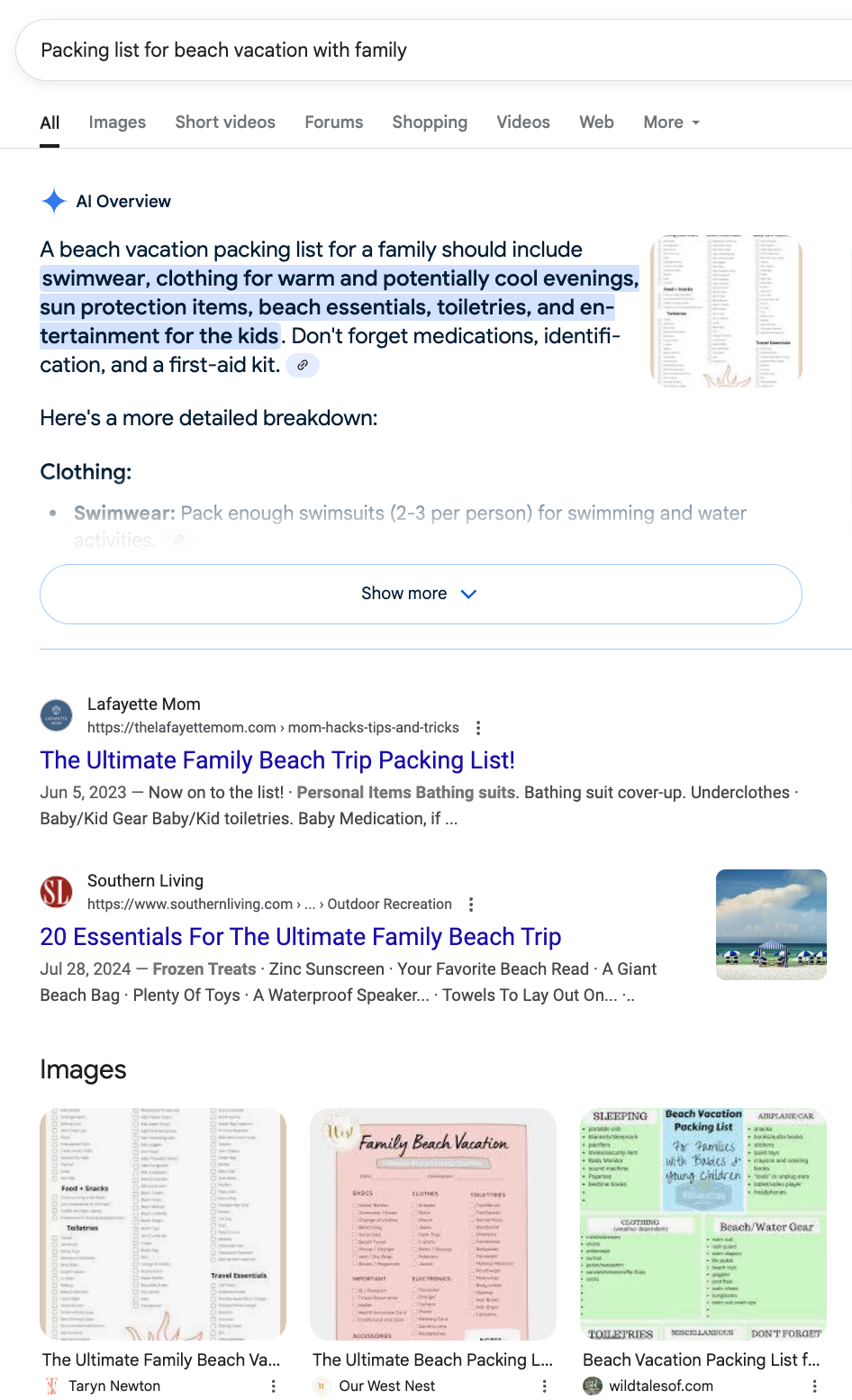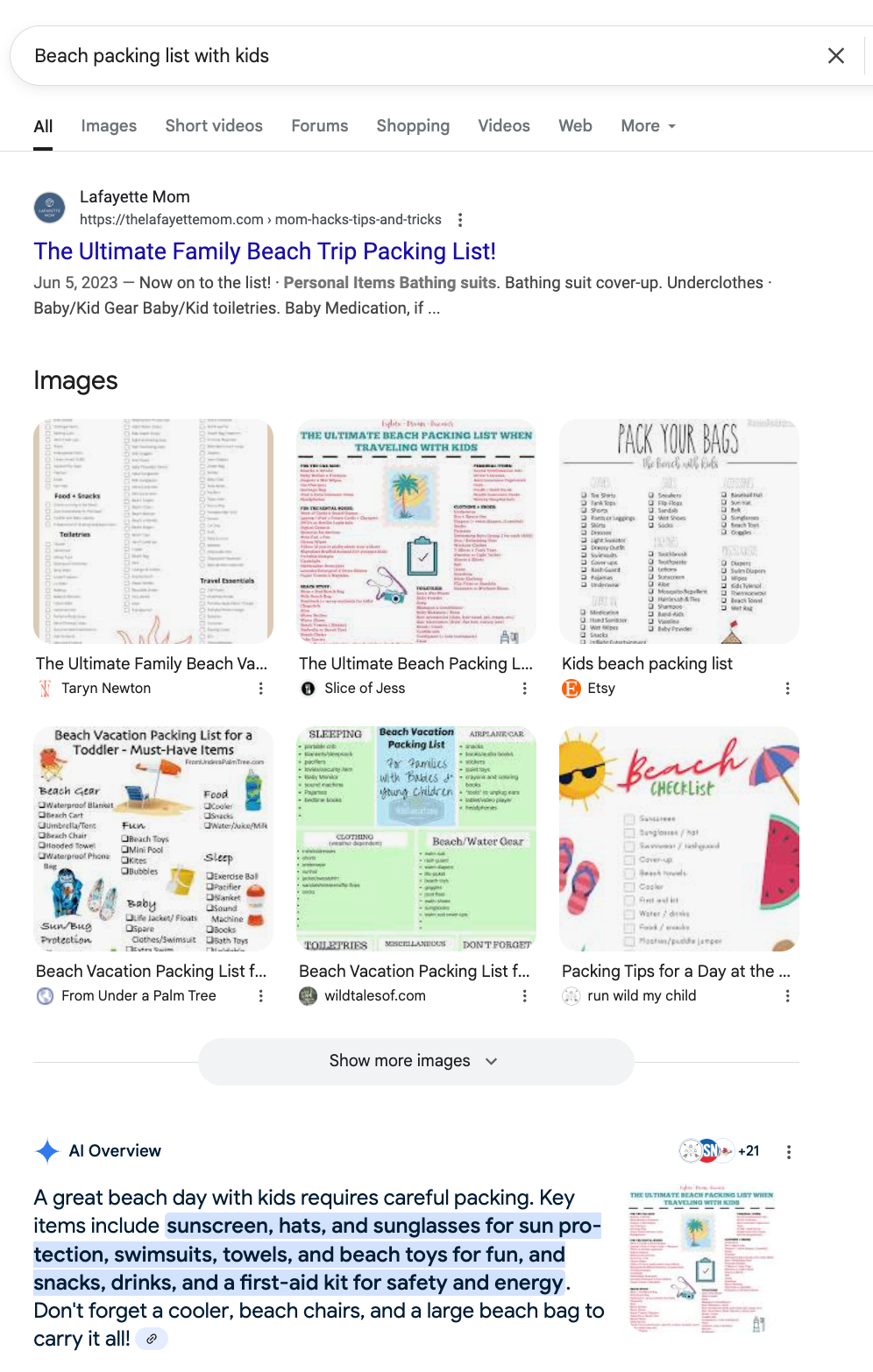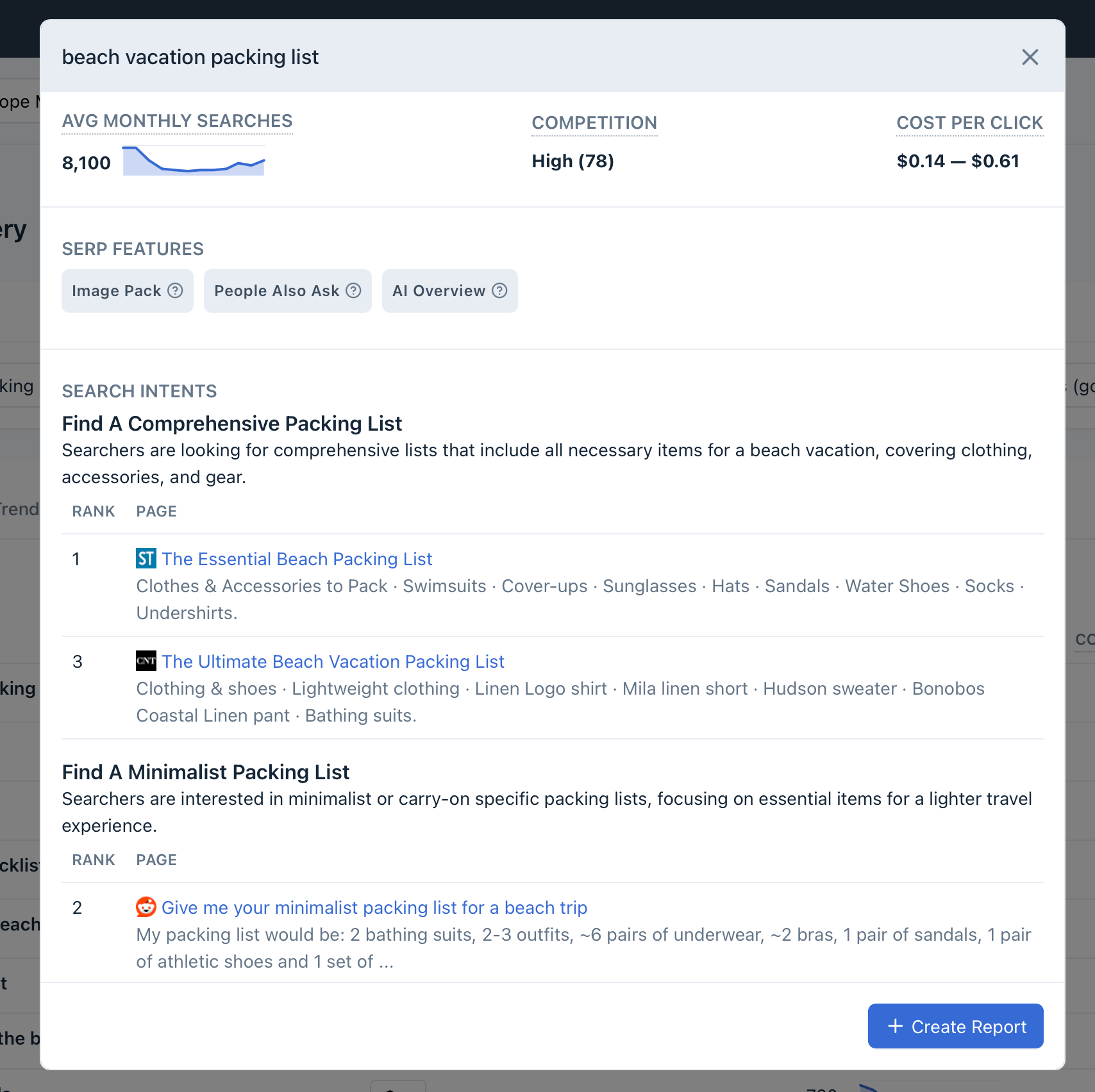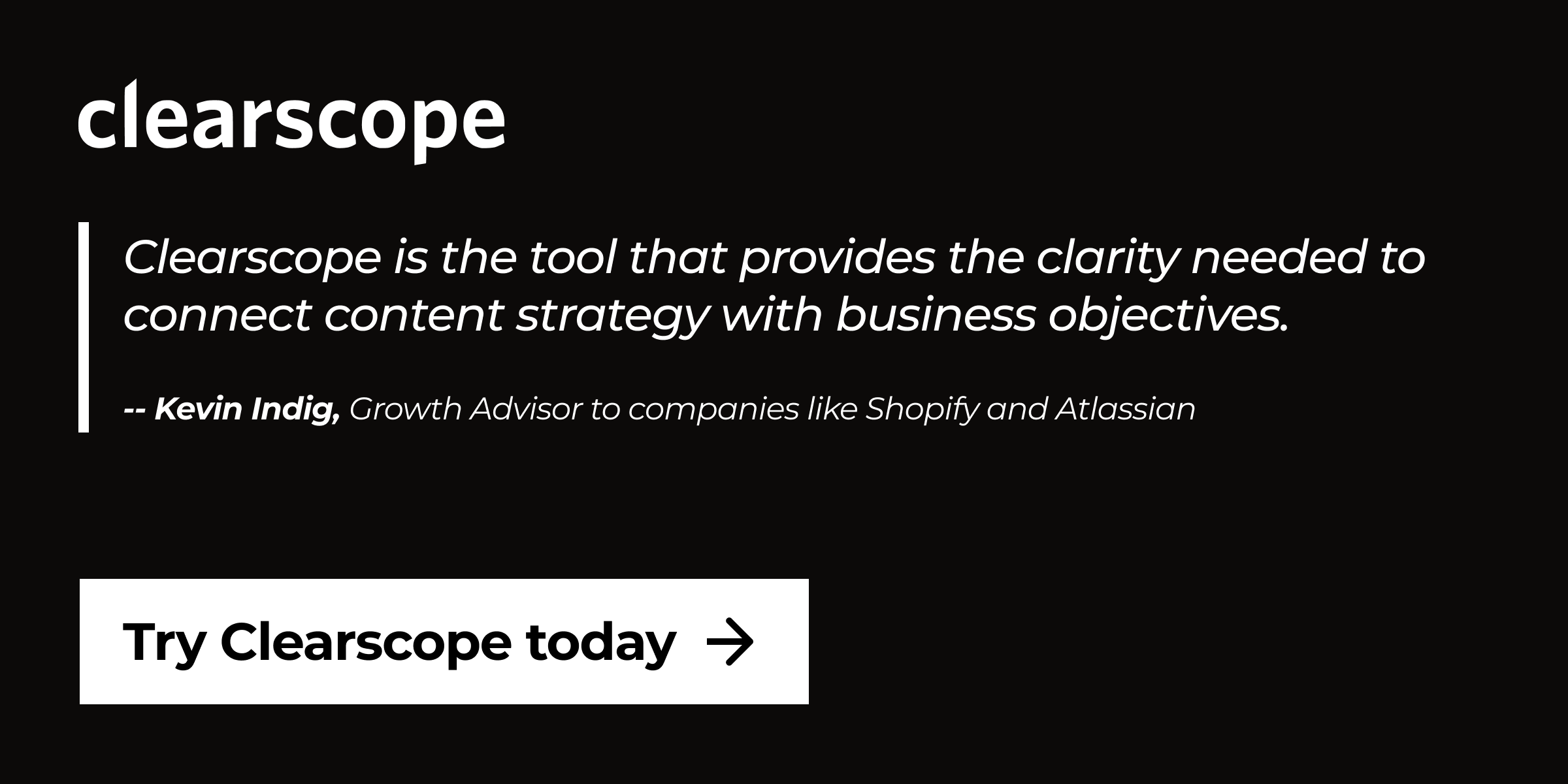Search Intent Analysis, Humanized: Introducing Clearscope's New AI-Powered Intent Summaries
Topic: Product
Published:
Written by: Liz Biscevic
For years, SEO platforms have treated search intent as a box-checking exercise. Assign a label—"informational intent," "commercial intent," "transactional intent"—and move on. But in today’s search landscape, a basic tag doesn’t cut it for true content strategy. If you want your content to resonate, you need more than a category. You need context.
That’s why we’re excited to introduce a major upgrade to Clearscope's platform: AI-powered Search Intent Summaries.
Unlike traditional search intent tools that stop at assigning a simple label, our new feature uses AI to generate concise, human-readable explanations of what users are actually looking for when they search a given term. Not just the "what," but the "why."
Why Labels Alone Fall Short
Most search intent tools stop at tagging a query with a basic label and leave you to interpret the rest. That creates friction, especially when you're trying to create content that deserves a place on the first page of search results.
Labels like "informational" or "transactional" can be helpful, but they’re often too broad to act on. These basic intent types don't account for the nuances of user needs or what users actually expect to find from their Google search.
Two informational queries might look similar on paper, but require very different content in practice. For example, let’s look at two in Ahrefs:
"Packing list for beach vacation with family"

"Beach packing list with kids"

While Ahrefs provides a high-level intent label like “informational,” this alone doesn’t capture the nuance between queries. Two searches with the same label can imply very different user motivations and preferred content formats. In this example, one is broad and general; the other is highly specific, likely requiring tailored advice, gear recommendations, and kid-focused checklists. That’s where Clearscope’s approach stands out. In the next image, we dive deeper into the SERP—unpacking how top-ranking content reflects varied user intents and specific content structures tailored to them.


One is broad and general, surfacing mostly generic listicles or travel blogs offering basic packing tips like sunscreen, swimsuits, and flip-flops. The other is highly specific—the SERP includes parenting sites, toddler-focused checklists, and product recommendations for items like swim diapers, shaded beach tents, and snack containers. It likely requires tailored advice, age-specific gear suggestions, and parent-friendly tips to truly satisfy the query.
Treating both with the same content approach risks missing the mark entirely.
To succeed in today’s SEO and AI result driven environment, content teams need deeper insights. They need context. They need a better way to translate intent into content that works for humans, search engines or large language models like ChatGPT.
Clearscope now delivers exactly that.
A New Standard for Search Intent
Clearscope's new Search Intent Analysis goes beyond traditional tools. This new feature helps content teams move from guesswork to precision. Rather than relying on generic intent labels, Clearscope provides practical, human-readable insights that clarify the searcher’s goal. We'll help you:
Get contextual intent interpretations of what users are hoping to find—not just what category they fall into
See what content types and formats are actually ranking in the SERP—whether it’s listicles, how-to guides, product pages, or in-depth tutorials
Increase Signal to Noise on SERPs by filtering out distractions like ads and video carousels, so you can focus on what matters

For example, instead of simply labeling a keyword like "beach vacation packing list" as "informational," Clearscope might say:
"Searchers are looking for comprehensive lists that include all necessary items for a beach vacation, covering clothing, accessories, and gear."
That summary immediately communicates what type of page will serve the user best. It sets clear direction for content creation and helps ensure your content strategy meets the moment.
In an increasingly competitive search landscape, this kind of nuance isn't a luxury—it's a necessity. Because the better you understand search intent, the better your content will perform.
Take Your SEO Strategy Further
We believe understanding human intent is the next frontier in search optimization. By translating vague labels into clear summaries, Clearscope helps you stop guessing and start delivering content that hits the mark.
The Search Intent Summary feature is now live in all Clearscope accounts.
Ready to see the difference humanized search intent makes? Start today.

What Is a Content Refresh and Why It Matters for SEO
Discover how you can boost your SEO with a content refresh. Update outdated pages, enhance readability, and align with current search intent to improve rankings and drive organic traffic.
Read moreWhy Search Intent Optimization Beats Keyword Optimization
Optimizing for search intent vs. SEO keywords: Which is better? Explore the difference between keyword and intent-based SEO strategies.
Read moreSEO Keyword Research: What It Is and Why It’s Important for SEO
Learn how keyword research identifies top search terms to boost SEO, align content with user intent, and improve rankings, traffic, and conversions.
Read more